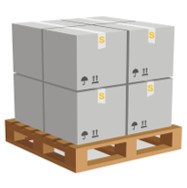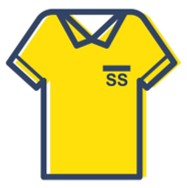
Steering through online apparel stores frequently proves difficult when aiming for an accurate fit. Distinct from storefront try-ons, virtual shopping typically produces uncertainty regarding how items will actually fit your contour. Nevertheless, don’t lose hope! Leveraging practical insight and the correct aids, you can navigate virtual sizing and obtain clothing that complements your singular physique. As a first move, familiarize yourself with your size data. Such data cover bust, waistline, hip circumference, and inseam length. Utilize a measuring tape to get accurate readings. Make sure to consult the vendor’s size charts. Those guides typically present comprehensive garment measurements and their size equivalents. Likewise, scan purchaser remarks. Prior purchasers can give practical guidance about how an item truly fits. Find reviewer comments that discuss sizing and give constructive fit information.
Comprehending standard size definitions: their meanings and applications.
Across design, production, and daily life, standard dimensions serve an essential function. From home furnishings to garments to construction supplies, established sizes deliver consistency and compatibility. Learning the significance of standard sizes and employing them properly leads to better project results and fewer hassles.
To begin with, let's delve into the world of common size designations. As an example, a standard paper sheet usually means an 8.5×11 inch page. The convention receives broad recognition in multiple fields and helps printing and communication processes.
- Likewise, for apparel, standard sizing tables offer a guideline to select garment sizes from body measures like height, bust, and waist.
- Also, in furniture planning, familiarity with standard sizes is important for proper spatial arrangement.

Reading size charts: best practices for accurate measurements.
Sizing garments can often appear as if you’re solving a coded riddle. Perplexing size tables frequently make shoppers feel frustrated. Still, keep composed! Utilizing these pragmatic hints, you can master correct measurements and dodge ill-fitting apparel. To begin, purchase a trustworthy measuring tape. Verify the tape’s flexibility to wrap your body without discomfort. Stand erect in front of a mirror and relax your muscles to get the most accurate results. Wrap the tape around the fullest area of your bust with it level to the floor. Apply the same steps to measure waist just above the navel and hips at their widest circumference. Resist tightening the tape excessively – aim for a snug, comfortable fit. Check the item-specific size table because brands interpret sizes differently. Attend to details like suggested body types and the product’s fit style. Check your numbers against the chart and choose a size that reflects your measurements.Conquering online clothing sizes: decoding the subtleties.
Launching into online garment shopping is enjoyable but regularly involves the special challenge of understanding e-commerce sizes. Contrary to traditional shops with fitting options, the digital marketplace requires more attentiveness. Seller size guides are informative but often fall short of the bespoke experience offered by fitting rooms. For the best chance at an ideal fit, study size charts thoroughly, factor in your measurements, and note brand variances.
- Consult reviews: other buyers’ remarks provide valuable truth about garment sizing.
- Obtain precise measures: use a flexible tape and a clear mirror to achieve dependable results.
- Don’t count on your standard size alone: because brands change sizing, always look at the specific chart.
Incorporating these approaches empowers you to resolve online sizing subtleties with confidence and enjoy superior shopping results.
Size chart basics: understanding XS through XXL.

Working out the optimum size sometimes proves puzzling. This is where sizing guides become valuable! They provide vital information about the dimensions of each garment, helping you select the best fit. Whether shopping through websites or brick-and-mortar, looking at size charts is beneficial. This confirms your buy will fit well and be comfortable to wear. A compact guide to explain common sizing shorthand: * XS: Minuscule * S: Compact * M: Mid * L: XL-ish * XL: Size 10 * XXL: 2XL Note that charts vary between brands, so review each product’s guide. Good luck shopping!
A practical guide to standard apparel sizing.
Standard size apparel can be a confusing beast to navigate. Different brands and even different types of clothing within the same brand can have wildly different sizing. These disparities can hinder finding clothing that fits and feels comfortable. Thankfully, general recommendations can make standard apparel sizing easier to handle. Reviewing the size chart of each item you consider is one of the most important things. Do not rely solely on your customary size. It's also helpful to take your own measurements and compare them to the size chart. Be aware that sizing can evolve with each season and year. So it's always a good idea to double-check the size chart before you buy anything. Lastly, opt to size up or down if that will yield a better fit. Opt for properly fitting garments instead of ones that are too tight or too slack.Finding your perfect style: clothes that flatter your body type.
Concerning clothing, there’s no single fix appropriate for all. Each physique is unique and deserves garments that bring out its best features. Learning your body shape empowers you to choose pieces that enhance confidence.
- Commence by measuring bust, waist, and hip circumferences.
- Factor in your height and physical build.
- Bear in mind these serve merely as starting points.

Making online size selection tangible: pixels to reality simplified.
Landing the correct fit via online buying can be a nuisance. Conventional charts commonly create guesswork and contribute to returns and disappointment. However, remain confident! Cutting-edge e-commerce sizing technologies are altering shopping dynamics. These services combine your measurements with algorithms to deliver customized fits and make online visuals reflect reality.
- Eliminate speculation and embrace assurance in your internet purchases.
- Equipped with proper sizing, you can wear purchases without the burden of returns or bad fits.
Pinpointing bust, waist, hips: expert measurement practices.
Achieving a perfect fit with your clothes often hinges on accurate size measurement. Understanding your bust circumference, waistline, and hip dimensions is crucial for selecting garments that flatter your figure. Measure accurately by using a flexible tape measure: stand tall, relax shoulders, wrap the tape around the fullest bust area and keep it level along the back. Write down the result in inches or centimeters. Then determine your natural waist (usually slightly above the navel) and record its circumference. Size Chart To end, stand with feet together for hip measurement, circle the tape at the widest point and keep it level above the bottom. Armed with these measurement values, you can match them to brand-specific size charts with assurance. Note that manufacturers’ size ranges often differ, so it's wise to examine several charts. Be willing to go up or down a size based on the specific garment’s cut.
Say goodbye to sizing frustration: a comprehensive guide.

Do sizing inconsistencies annoy you and make your closet seem disorganized? Do sizing charts present a persistent challenge for you? We sympathize with the struggle and made this in-depth guide to help you conquer sizing mazes and find the right fit each time.
- Be set to uncover measurement secrets and guidance on measuring yourself precisely.
- Explore common sizing discrepancies and how to navigate them across different brands and styles.
- Locate your ideal size in diverse clothing types—tops, bottoms, dresses, jackets.
With these expert recommendations, say farewell to sizing troubles and assemble a well-fitting wardrobe.
Selecting the ideal fit on every occasion.
In apparel matters, a key element is ensuring a suitable fit. A correctly fitted outfit enhances your look and confidence, whereas a poor fit often leads to discomfort and unhappiness. Luckily, choosing the right size need not be an overwhelming task. Follow these useful recommendations: * Refer to the brand’s size chart for guidance. * Record your body measurements carefully. * Refrain from relying exclusively on your standard size. Think about material and whether it has stretch. * If you're between sizes, opt for the larger size for a more comfortable fit. Adjust the piece later with alterations if required.